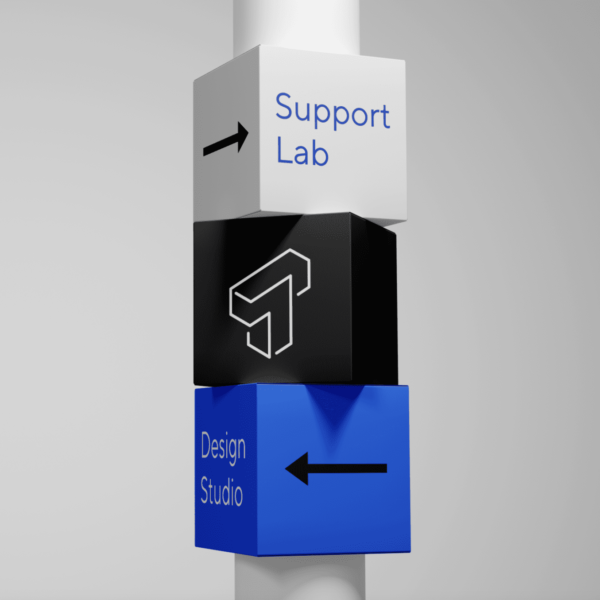
The media and entertainment industry is on the brink of digital transformation. With technological advancements, consumer preferences are shifting to more personalized interactions. This is where media software development flaunts its magic.
This is all about adopting cutting-edge technologies and emerging trends to meet unique customer demands. However, disruptive innovation needs in the entertainment industry show how media software development companies are ruling these days.
Further, in this blog, we will learn about the trends and advanced technologies set to reshape the media software industry in 2024.
So, let’s begin exploring the facts!
Key Trends and Technologies in Media Software Development
The rise in consumption of media content has increased like never before. After COVID-19 outbreaks, media streaming software development has revolutionized the way we used to watch digital content. Further, technical advancements like 5G internet, smartphones, and artificial industry bring a paradigm shift in this industry.
Let’s find out those trends and technologies shaping the future of the media industry.
Revolutionary Trends
1. AI and ML
AI and ML are more than just smart assistance in this world of media streaming software development. Further, these tech trends offer a range of features like personalized content. This is because it is easy to learn user preferences using AI and ML algorithms.
In this ever-evolving digital age, AI chatbots offer voice-based assistance to engage users more personally and interactively. Further, these technologies can analyze client behaviors and market trends to suggest personalized recommendations.
Moreover, custom software development for small businesses uses ML algorithms and AI in code generation. As a result, faster media software development is possible with limited human errors.
Furthermore, AI enables virtual assistance to connect users through natural language processing. This is the reason behind creating more personalized content based on client requirements. So this will lead the media and entertainment industry to become more customer-centric.
2. eSport broadcasting
In the media software development landscape, eSport broadcasting has become one of the potential trends. Meanwhile, a media software development company leverages high-speed internet connectivity and gaming consoles for the successful streaming of online games.
Furthermore, eSports makes it possible to broadcast simple sports to competitive ones. This revolutionary trend enables live streaming of games via high-speed wireless internet.
Media streaming software development services invest in eSport to enjoy extensive consumer support. This is how the entertainment industry steps into these disruptive waves.
3. Immersive experience integration
Custom software development for startups is paying significant attention to integrating AR and VR. This enhances the relationship between customers and content creators.
Further, these trends help the media and entertainment industry to build real-world-like immersive experiences. These days, clients are capable of experiencing any destination or service by just using AR/VR tools.
Moreover, integrating AR/VR in media software development enhances the sales and revenue of a business with an in-depth understanding. This media software development trend merges the real and digital worlds at the same time for improved experiences.
It offers more interactive and deep user engagement throughout the content. Moreover, AR integrates digital content into the real world.
4. Big data integration
Media software development majorly focuses on developing personalized experiences. Thus, custom software development for startups follows big data trends to analyze user behavior and patterns. Furthermore, this strategy helps the media industry gain insights into consumer preferences.
Big data involves providing more specific recommendations based on the user data analysis. Meanwhile, this trend works on the content recommendation algorithms for better user engagement.
Moreover, this trend helps in more accurate predictions about users. In this case, ML algorithms analyze current trends and previous records to understand customers’ preferences.
5. D2C Streaming
In this digital world, speed and quality are two factors satisfying customer needs. However, D2C streaming is another feature that media streaming software development follows for high-speed and quality content for users.
Millennials and Gen Z are fond of these D2C streaming trends due to smartphones and high internet connectivity. Moreover, this enhances cross-platform compatibility within streaming platforms like OTT channels.
With this feature, media software development companies continue to deliver excellent experiences to users.
6. 5G Connectivity
With 5G internet connectivity, people are enjoying high-quality video content with high speed and lower loading time. This tech trend revamps the streaming world into high definition, where real-time interaction is possible.
This new trend in the media world allows media software development firms to integrate AR and VR skillfully. Further, high bandwidth and connectivity also offer faster personalization in content delivery. This also allows multi-device streaming at a single time.
However, this also enhances real-time responses based on user requirements. 5G, as a trend, raises the bar so high with opportunities to turn imagination into reality.
7. Cloud solutions
Cloud computing has become a disruptive trend in media software development services due to the online streaming capabilities using remote servers. Furthermore, this technology eliminates the need for hardware when accessing any content.
For instance, cloud gaming is a revolutionary trend in the media and entertainment world. This strategy enables streaming games on online platforms without the need for hardware. This offers more accessible, flexible, and convenient digital content to the users.
Furthermore, cloud solutions in media software development offer cross-platform abilities. This feature enables users to access media content across any device. Customers experience quality content like never before.
8. Blockchain for Media
As technology evolves rapidly, blockchain becomes the new hero in the media world. Meanwhile, using blockchain, media software development services protect their digital data. This strategy fights against the issue of duplicate content, monetization issues, and data piracy.
Further, this trend helps the entertainment industry reduce IPR act integration issues. Blockchain secures content ownership by providing unchangeable data records. This establishes ownership control over any digital content.
Emerging Technologies
With technological advancements and changing user behavior, media streaming software development invests in innovative technologies. This is a big step toward embracing disruptive waves in the media and entertainment business. Let’s discuss this in detail.
1. User-generated content
UGC, as an advanced technology, helps content creators specifically. This is behind encouraging positive user engagement with the content created by various creators. Further, in media software development, UGC supports different media categories like images, videos, podcasts, and texts.
Moreover, UGC opens the door for media streaming software development firms to design tools for user-friendly content editing. This technology often encourages the development of applications for graphics design.
Furthermore, this technology is behind content curation and verification. UGC supports content creators in using AI to identify and restrict unsafe content. Meanwhile, it’s an initiative to maintain a brand reputation for the media and entertainment industry.
2. Advanced Analytics
This is the technology that brings drastic changes to the way we consume digital content. Meanwhile, advanced analytics is the biggest player, analyzing user behavior, watch history, and patterns. This often helps refine more personalized advice.
Moreover, media software development services integrate advanced analytics to learn how consumer habits are changing with time. This will help media businesses stay updated.
This technology often ensures smooth and right landing of digital content based on the requirements.
3. Cognitive computing
People these days are enjoying human-like responses over media streaming platforms. In this scenario, media software development integrates cognitive computing into these platforms. Further, this technology incorporates NLP, AI, and ML for better user interactions.
Cognitive computing helps analyze content and user emotions for more compelling content delivery. Moreover, this emerging technology often streamlines chatbot interactions.
Furthermore, cloud computing uses NLP to analyze extensive user data to generate more personalized content suggestions. Also, this technology considers social media updates, UGCs, and real-time feedback to enhance user experiences.
4. Edge computing
A media software development company uses edge computing as a network architecture. Further, they help in processing data near its origin, which reduces latency and improves speed. Media streaming software development integrates edge computing in content creation, distribution, and consumption.
It improves viewers’ quality with faster streaming and easy downloads. Moreover, this technology helps manage internal workflows in the media industry for better results. Edge computing helps deliver highly scalable content to its audience.
Meanwhile, media software development companies use edge computing to streamline content distribution channels. This is because it stores data closer to the user, which results in lowering delays.
5. Content protection with Digital Rights Management (DRM)
In this world full of hackers and frauds, DRM solutions emerge as technology that protects content. This strategy restricts any unauthorized distribution of content.
Further, DRM supports content creators in data protection when they upload content across different platforms. This becomes crucial these days to remove duplicate content issues.
6. Generative AI
Generative AI helps media software development services transform how we used to create, edit, and distribute content. Meanwhile, this technology allows high-quality content development into various forms like videos, images, audio, and texts.
Further, this innovative technology helps in media streaming software development with human-like content creation. The entertainment industry can streamline production by maintaining high quality with generative AI.
Conclusion
As we enter 2024, technology and creativity are significant factors in media software development. In this way, the media industry transforms how we perceive and consume digital content. Even custom software development for small businesses adopts new technologies and trends for better output. So, with these tech trends, media software development is heading towards a secure future with better user engagement.











